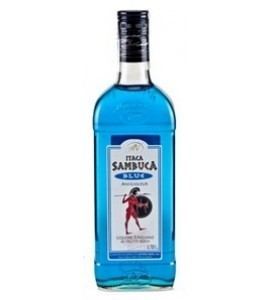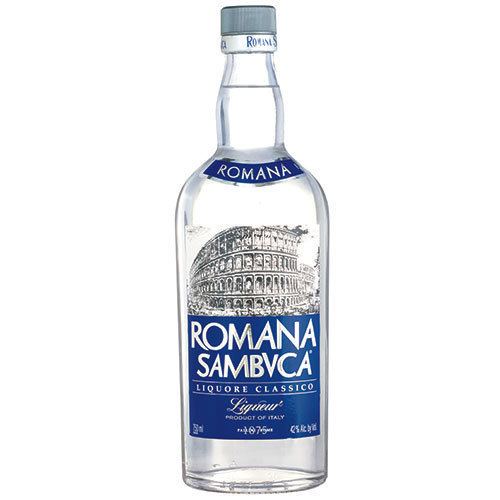 | ||
Similar Jägermeister, Amaretto, Absinthe, Kahlúa, Ouzo | ||
How to drink sambuca
Sambuca ([samˈbuːka]) is an Italian anise-flavoured, usually colourless, liqueur. Its most common variety is often referred to as white sambuca to differentiate it from other varieties that are deep blue in colour (black sambuca) or bright red (red sambuca). Like other anise-flavoured liqueurs, the ouzo effect is sometimes observed when combined with water.
Contents
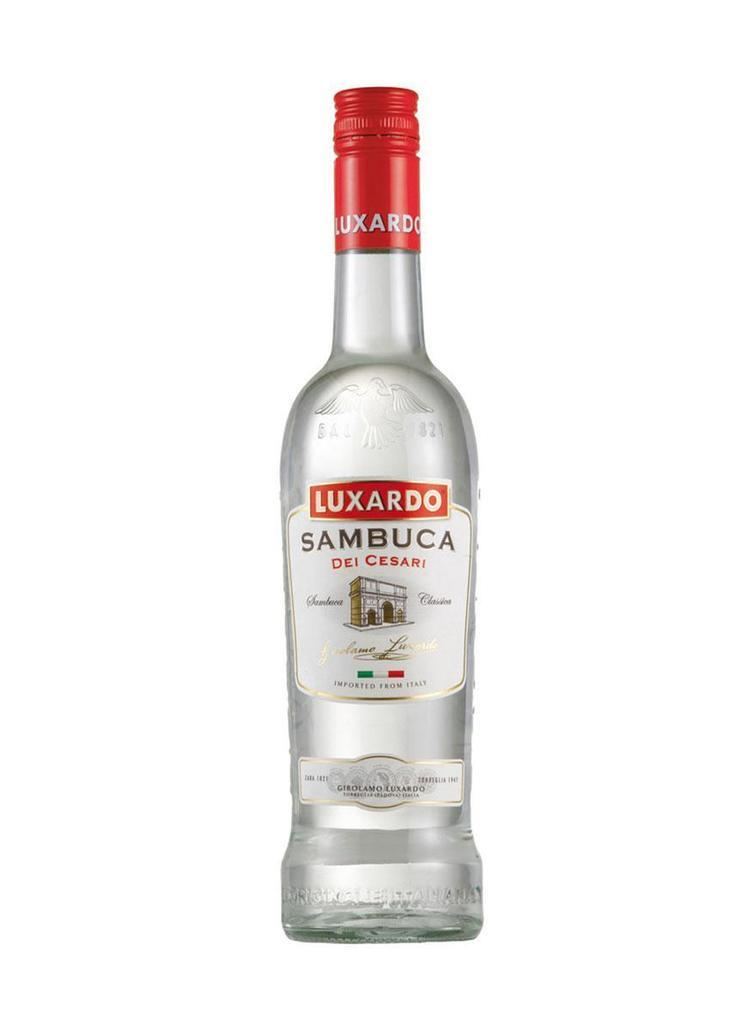
How to make a flaming sambuca shot
Ingredients
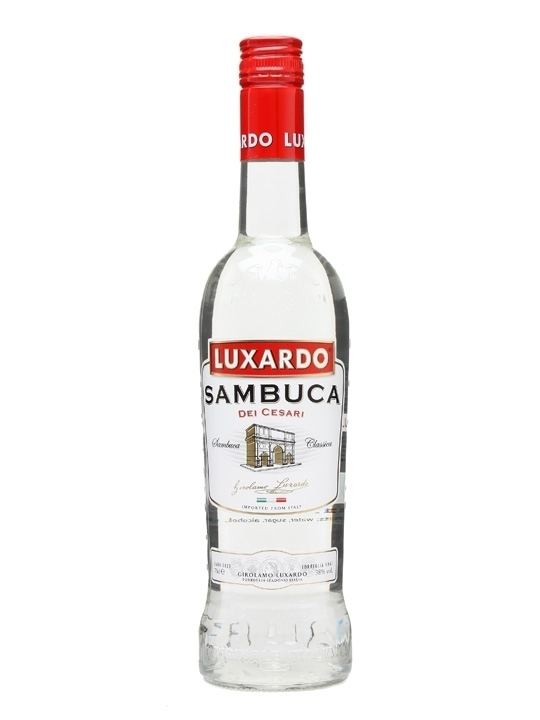
Sambuca is flavoured with essential oils obtained from star anise, or less commonly, green anise. Other spices such as elderflower, liquorice and others may be included, but are not required as per the legal definition. It is bottled at a minimum of 38% alcohol by volume. The oils are added to pure alcohol, a concentrated solution of sugar, and other flavouring.
History
The Oxford English Dictionary states that the term comes from the Latin word sambucus, meaning "elderberry".
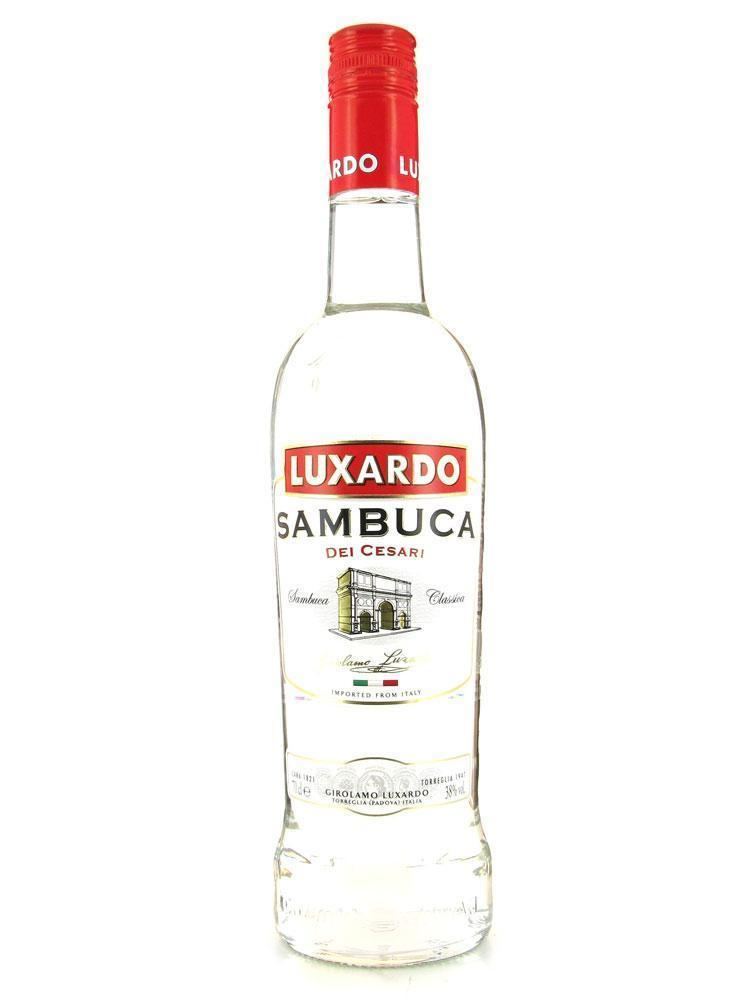
The Greek word Sambuca was first used as the name of another elderberry liquor that was created in Civitavecchia about 130 years ago.
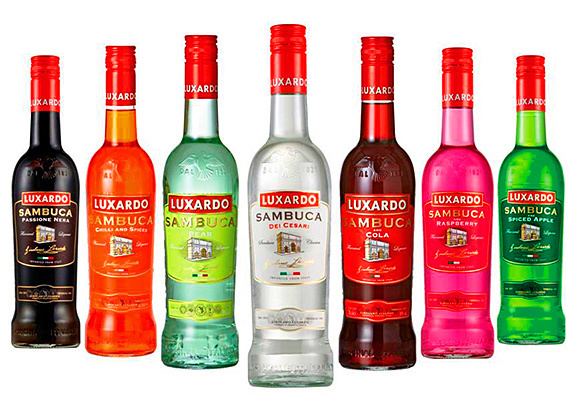
The first commercial version of such a drink started at the end of 1800 in Civitavecchia, where Luigi Manzi sold Sambuca Manzi. In 1945, soon after the end of Second World War, commendatore Angelo Molinari started producing Sambuca Extra Molinari, which helped popularise Sambuca throughout Italy.
Having both originated as anise based spirits containing elderberry, Sambuca shared some commonality with the Basque drink Patxaran.
Serving
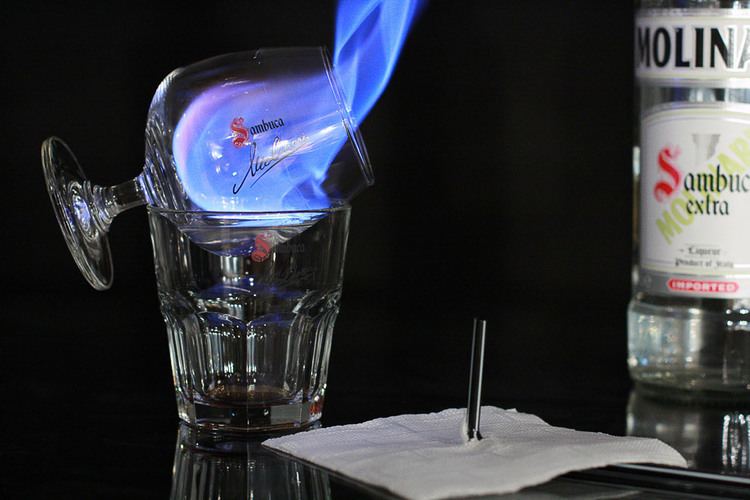
Sambuca may be served neat. It may also be served on the rocks or with water, resulting in the ouzo effect from the anethole in the anise.
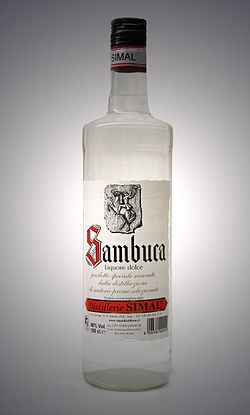
Sambuca is considered to go particularly well with coffee. Like other anise liqueurs, it may be drunk after coffee as a ammazzacaffè or added directly to coffee in place of sugar to produce a caffè corretto.
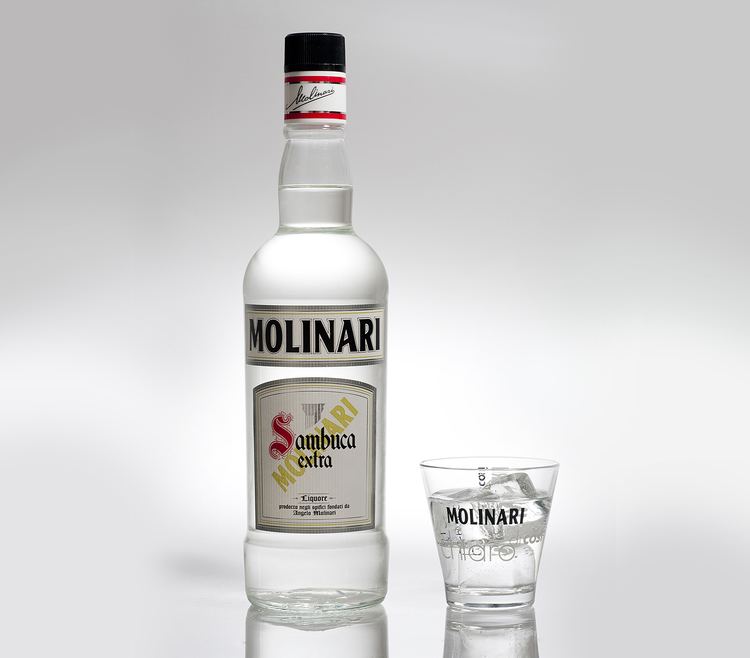
A serving of sambuca can be a shot with seven coffee beans, representing the Seven hills of Rome. Likewise, a shot with one coffee bean, called con la mosca, which means "with the fly", is as common. The traditional serving is with three coffee beans, each representing health, happiness and prosperity. The shot may be ignited to toast the coffee beans with the flame extinguished immediately before drinking.
